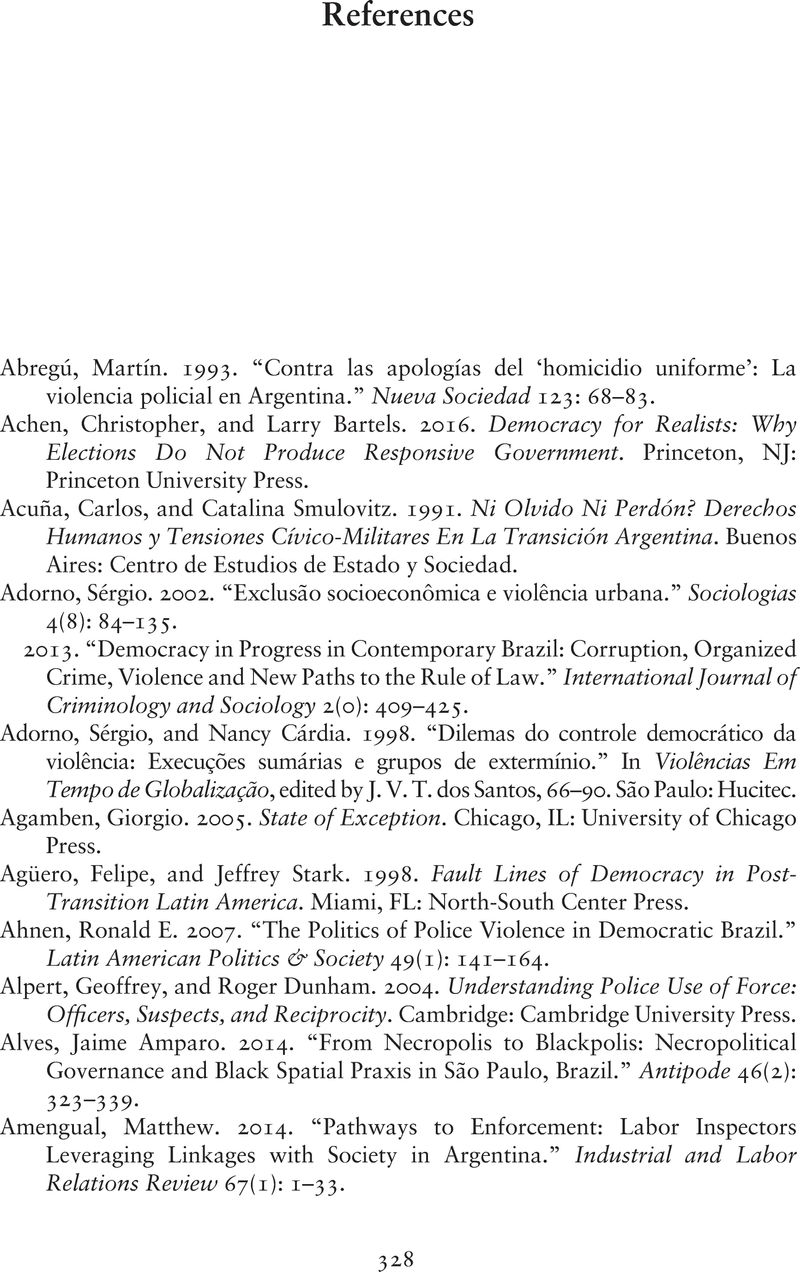Book contents
- Authoritarian Police in Democracy
- Cambridge Studies in Comparative Politics
- Authoritarian Police in Democracy
- Copyright page
- Contents
- Figures
- Tables
- Acknowledgments
- 1 Police
- 2 Ordinary Democratic Politics and the Challenge of Police Reform
- Part I Persistence
- Part II Reform
- References
- Index
- Other Books in the Series (Continued from page ii)
- References
References
Published online by Cambridge University Press: 30 October 2020
- Authoritarian Police in Democracy
- Cambridge Studies in Comparative Politics
- Authoritarian Police in Democracy
- Copyright page
- Contents
- Figures
- Tables
- Acknowledgments
- 1 Police
- 2 Ordinary Democratic Politics and the Challenge of Police Reform
- Part I Persistence
- Part II Reform
- References
- Index
- Other Books in the Series (Continued from page ii)
- References
Summary

- Type
- Chapter
- Information
- Authoritarian Police in DemocracyContested Security in Latin America, pp. 328 - 343Publisher: Cambridge University PressPrint publication year: 2020



